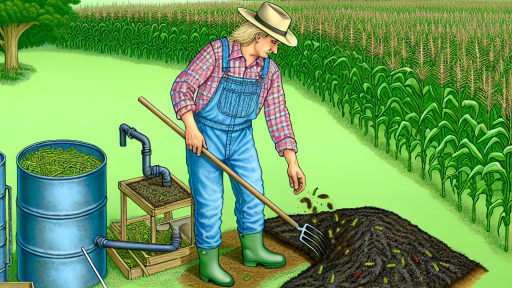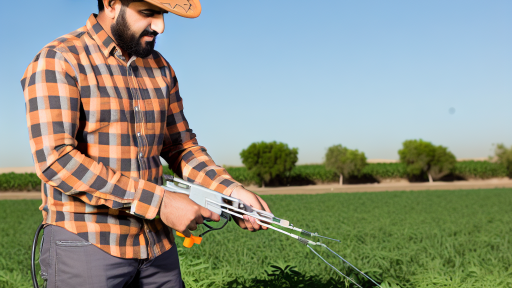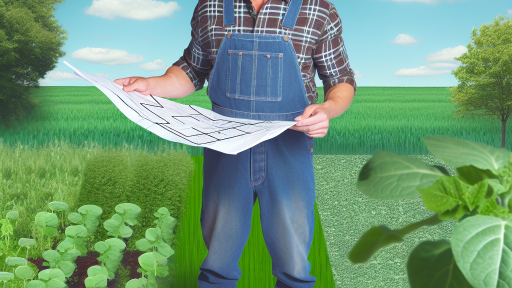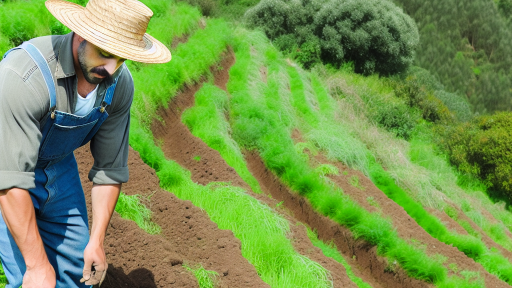Introduction to Drip Irrigation and Its Importance in Sustainable Farming
Drip irrigation is a precise and efficient method of watering crops.
This technique delivers water directly to the plant’s roots.
It minimizes water waste and encourages healthy plant growth.
Farmers are increasingly adopting this method for various reasons.
One primary benefit is its sustainability in agriculture.
The Efficiency of Drip Irrigation
Drip irrigation uses significantly less water compared to traditional methods.
This efficiency helps conserve precious water resources.
Moreover, it reduces the energy needed for water transport.
Farmers can thus lower their production costs.
Enhancing Crop Yield
Consistent moisture levels promote optimal crop growth.
Crops can thrive in a controlled environment provided by drip systems.
This leads to higher yields and better quality produce.
Additionally, targeted watering reduces weed competition.
Environmental Benefits
Drip irrigation minimizes runoff and soil erosion.
It safeguards local ecosystems by protecting waterways.
Transform Your Agribusiness
Unlock your farm's potential with expert advice tailored to your needs. Get actionable steps that drive real results.
Get StartedFurthermore, this method reduces the need for chemical fertilizers.
Fewer chemicals lead to healthier soil and better biodiversity.
Adapting to Climate Change
Drip irrigation systems are crucial for adapting to changing weather patterns.
They provide a reliable water supply during dry spells.
This adaptability ensures food security for communities.
Farmers can produce crops even in challenging conditions.
Basic Components of Drip Irrigation Systems
Introduction to Drip Irrigation
Drip irrigation is a highly efficient watering system.
This method delivers water directly to the plant roots.
As a result, it reduces water waste significantly.
Main Components of Drip Irrigation Systems
A typical drip irrigation system consists of several key components.
Water Source
The water source provides the necessary irrigation supply.
This source can be a well, pond, or municipal supply.
Filter System
The filter system removes debris from the water.
This step is crucial to prevent clogging of the emitters.
Pressure Regulator
A pressure regulator ensures consistent water pressure.
This feature allows for uniform water distribution.
Main and Lateral Lines
The main line transports water from the source to the field.
Lateral lines branch out from the main line.
They distribute water directly to individual plants.
Emitters
Emitters control the flow of water to each plant.
They can be adjustable to accommodate different needs.
Additional Components
Some systems may include additional parts to enhance efficiency.
Timer and Automation
Timers allow for scheduled watering sessions.
Automation increases the convenience of the irrigation process.
Showcase Your Farming Business
Publish your professional farming services profile on our blog for a one-time fee of $200 and reach a dedicated audience of farmers and agribusiness owners.
Publish Your ProfileSoil Moisture Sensors
Soil moisture sensors monitor the moisture levels in the ground.
These sensors help optimize water use based on real-time data.
Benefits of Drip Irrigation Components
Each component of the drip irrigation system plays a vital role.
These systems save water and promote plant health.
They also support sustainable farming practices effectively.
Types of Drip Irrigation Methods: Surface vs. Subsurface
Surface Drip Irrigation
Surface drip irrigation delivers water directly to the soil surface.
This method uses a network of pipes and emitters situated above ground.
Farmers often prefer this system because of its efficiency.
Additionally, surface drip irrigation allows for easy monitoring of water flow.
However, it can be susceptible to evaporation losses during hot weather.
Advantages of Surface Drip Irrigation
Surface drip irrigation promotes uniform water distribution across crops.
It minimizes water runoff and deep percolation losses.
This method also reduces weed growth around crop roots.
Farmers can adjust the emitter spacing according to crop needs.
Moreover, it simplifies the application of fertilizers.
Disadvantages of Surface Drip Irrigation
One drawback is the initial setup cost for the system.
Additionally, clogging of emitters can pose significant challenges.
Farmers must regularly maintain and flush the system.
Consequently, surface systems may not suit all soil types.
Subsurface Drip Irrigation
Subsurface drip irrigation places the emitters buried below the soil surface.
This method effectively reduces evaporation losses.
It also helps maintain soil moisture at optimal levels.
As a result, crops often demonstrate improved yield stability.
Moreover, this method minimizes weed growth further than surface systems.
Advantages of Subsurface Drip Irrigation
Subsurface irrigation delivers water directly to the root zone.
This enhances nutrient uptake and reduces leaching losses.
Furthermore, it protects the system from physical damage by machinery.
Crops also benefit from a consistent moisture supply throughout growth.
Disadvantages of Subsurface Drip Irrigation
Subsurface systems require higher initial investment compared to surface systems.
Installation can be complex and time-consuming.
Furthermore, soil monitoring becomes essential for optimal performance.
Additionally, water table levels can impact efficient water delivery.
Delve into the Subject: Maximizing Carbon Storage on Agricultural Lands
Advantages of Drip Irrigation for Water Conservation
Improved Water Efficiency
Drip irrigation delivers water directly to plant roots.
This method minimizes evaporation and runoff.
As a result, it utilizes water more efficiently.
Crops receive just the right amount of moisture.
Consequently, farmers can optimize their water use.
Reduction in Water Waste
Traditional irrigation methods often lead to excessive water waste.
Drip irrigation helps mitigate this issue significantly.
Showcase Your Farming Business
Publish your professional farming services profile on our blog for a one-time fee of $200 and reach a dedicated audience of farmers and agribusiness owners.
Publish Your ProfileIt allows for targeted application in specific areas.
This targeted approach reduces overall water consumption.
Farmers can achieve higher yields with lower water usage.
Soil Health Improvement
Drip irrigation promotes healthy soil structure.
It fosters better root growth and nutrient absorption.
Moreover, consistent moisture prevents soil drying out.
This approach reduces soil erosion compared to other methods.
Ultimately, healthier soil leads to improved crop quality.
Flexibility and Adaptability
This irrigation method is adaptable to various terrains.
Farmers can modify the system based on crop needs.
Additionally, it works well with uneven landscapes.
Modern technology allows for easy monitoring and adjustments.
Thus, farmers can respond quickly to changing conditions.
Cost Savings Over Time
While initial installation costs may be higher, savings follow.
Reduced water use translates to lower utility bills.
Moreover, farmers benefit from higher crop yields.
This increased productivity leads to better profitability.
Overall, drip irrigation helps make farming more economical.
Find Out More: Planning Diverse Crop Sequences for Sustainable Yields
Case Studies: Successful Implementation of Drip Irrigation in Various Crops
Vegetable Farming Success
Alice Monroe farms organic vegetables in Oregon.
She implemented drip irrigation to enhance her crop yields.
This method allowed precise water delivery directly to the root zone.
As a result, Alice observed a 30% increase in vegetable production.
Moreover, her water usage decreased by 40% compared to traditional methods.
Fruit Orchard Innovations
James Cooper operates a fruit orchard in California.
He shifted to drip irrigation from flood irrigation systems.
This transition improved water efficiency significantly.
James reported that crop health improved due to better water management.
Additionally, he reduced weed growth in his orchard.
Field Crops Revitalization
Farmers in Kansas adopted drip irrigation for corn and soybeans.
They experienced remarkable resilience during drought conditions.
This approach allowed them to maintain consistent moisture levels.
Consequently, their yields remained stable even in challenging weather.
Many farmers noted reduced soil erosion as a positive side effect.
Horticulture Advancements
The Smith family runs a successful nursery in Florida.
They utilized drip irrigation to grow various ornamental plants.
This system provided optimal water control for sensitive species.
Furthermore, the family reported a 25% reduction in water costs.
Clients appreciated the high quality of the plants produced.
Community Impact
Many small-scale farmers joined together to implement drip systems.
Showcase Your Farming Business
Publish your professional farming services profile on our blog for a one-time fee of $200 and reach a dedicated audience of farmers and agribusiness owners.
Publish Your ProfileThis collective approach reduced costs through shared resources.
They formed training programs to educate others in their community.
Through collaboration, they significantly increased local crop diversity.
Farmers improved their income, promoting agricultural sustainability.
You Might Also Like: Cover Crops For Soil Regeneration Strategies
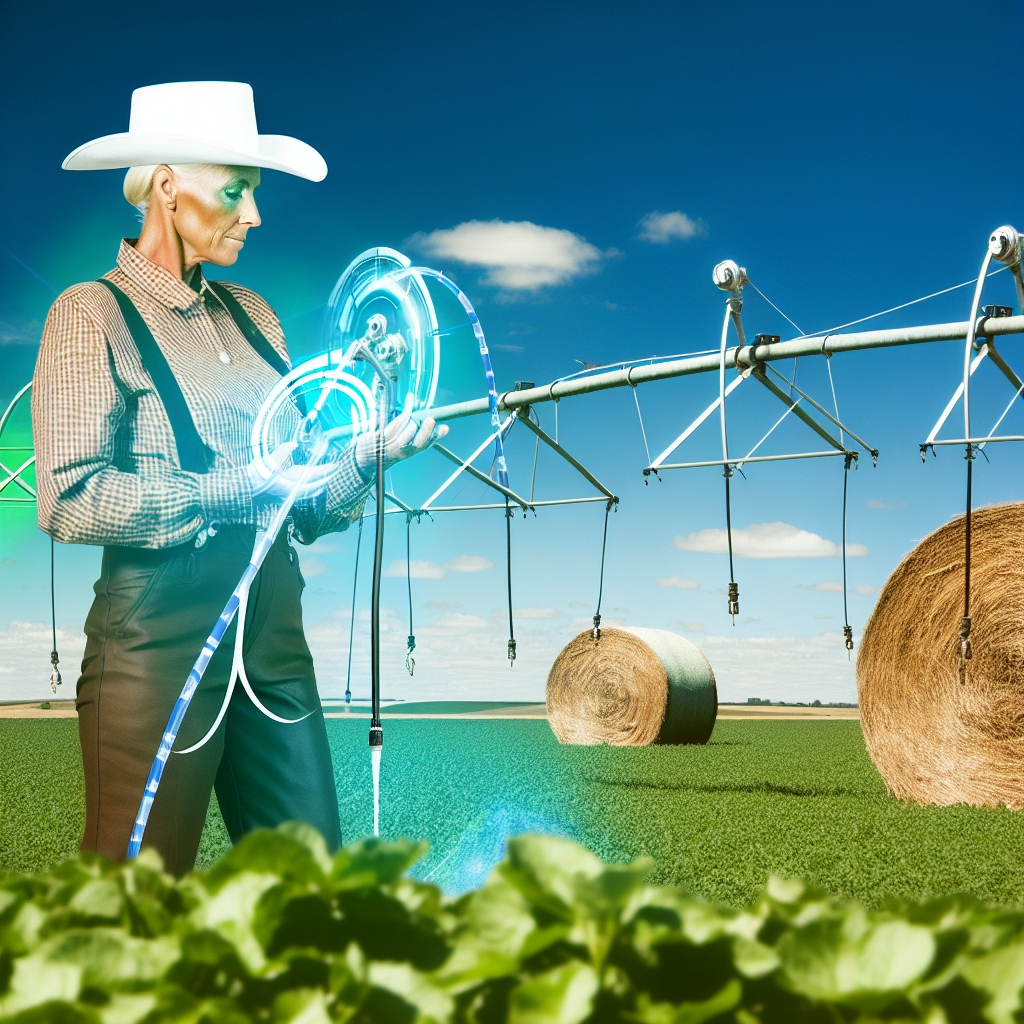
Challenges and Limitations of Drip Irrigation Systems
High Initial Costs
The initial investment for drip irrigation systems can be significant.
Farmers often need to purchase equipment and installation services.
Consequently, this may deter some farmers from adopting the technology.
Moreover, ongoing maintenance requirements can add to overall costs.
Technical Knowledge and Training
Implementing drip irrigation requires specific technical knowledge.
Farmers must understand how to design and manage the system.
Additionally, training is necessary for effective operation.
Without proper skills, users may struggle to achieve optimal performance.
Water Quality Concerns
The quality of water used in drip irrigation significantly impacts plant health.
Contaminated water can clog drip emitters and damage crops.
Farmers must regularly monitor and filter the water to prevent issues.
Thus, maintaining water quality adds another layer of complexity.
Environmental Impact
While drip irrigation is efficient, it can still have environmental drawbacks.
Over-reliance on any irrigation system can lead to water depletion.
Furthermore, improper use may result in soil salinization.
Farmers must find a balance to minimize adverse effects on the ecosystem.
Scalability Issues
Scaling up drip irrigation systems can present challenges.
The system must be carefully designed to ensure uniform coverage.
As farms grow, existing systems may require significant modifications.
Therefore, planning for scalability from the outset is crucial.
Potential for Clogging
Clogging of drip emitters is a common issue faced by farmers.
This problem often arises from sediment and mineral buildup.
Regular maintenance is essential to prevent and address clogging.
Otherwise, plants may suffer from uneven watering and stress.
Adaptability Limitations
Drip irrigation may not be suitable for all crop types.
Some plants have specific water and soil needs that differ.
This system may require adjustments for diverse agricultural practices.
Farmers need to evaluate the suitability for their crops carefully.
Delve into the Subject: Native Plant Integration in Agricultural Systems
Best Practices for Maintaining Drip Irrigation Equipment
Regular Inspection and Cleaning
Inspect your drip irrigation system regularly for leaks and blockages.
Cleaning the filters and emitters helps maintain optimal flow rates.
Additionally, check for signs of wear or damage in the tubing.
Address issues promptly to avoid larger problems later.
Seasonal Maintenance Tasks
Before the growing season, inspect the entire system thoroughly.
Ensure that all components function properly and are free of debris.
Showcase Your Farming Business
Publish your professional farming services profile on our blog for a one-time fee of $200 and reach a dedicated audience of farmers and agribusiness owners.
Publish Your ProfileDuring the off-season, drain the system to prevent freeze damage.
Store all equipment safely in a dry location.
Proper Water Management
Monitor your water usage regularly to optimize irrigation schedules.
Adjust the schedule based on seasonal weather changes and crop needs.
Employ moisture sensors to ensure efficient water application.
This approach can significantly reduce water waste in your system.
Upgrade and Replace Components
Consider upgrading older equipment to more efficient models.
Replacing worn-out tubing and emitters helps maintain performance.
Invest in high-quality materials to extend the life of your system.
Evaluate new technologies that enhance irrigation efficiency.
Training and Education
Provide training to employees on proper irrigation practices.
Educate them about the importance of maintaining the drip system.
Regular workshops can help improve overall system management.
Encourage sharing of best practices among team members.
Future Trends in Drip Irrigation Technology for Sustainable Agriculture
Advancements in Sensor Technology
Sensor technology is evolving rapidly in agriculture.
New sensors help monitor soil moisture levels accurately.
Farmers can optimize water usage with real-time data.
Moreover, this technology reduces the risk of over-irrigation.
Consequently, crops receive just the right amount of water.
Integration with Smart Farming Techniques
Drip irrigation is integrating seamlessly with smart farming.
Farmers are using automated systems to control irrigation.
These systems respond to weather conditions dynamically.
Additionally, they can adjust water flow based on crop needs.
This integration promotes efficiency and sustainability in farming.
Enhanced Drip Irrigation Systems
Recent innovations have led to improved drip irrigation systems.
Manufacturers are developing more durable and efficient materials.
These materials prolong the lifespan of irrigation setups.
Furthermore, newer models offer greater customization options.
Farmers can tailor systems to fit their specific agricultural demands.
Environmental Impact Considerations
Reducing environmental impact is a primary focus in agriculture.
Drip irrigation helps conserve water resources significantly.
Moreover, it minimizes runoff, protecting local water bodies.
As a result, sustainable practices gain traction among farmers.
Increased focus on environmental stewardship is becoming essential.
Collaboration and Knowledge Sharing
Collaboration among farmers and agricultural experts is key.
Knowledge sharing can enhance best practices in irrigation.
Workshops and training sessions can foster innovation.
Farmers can learn from each other’s experiences and successes.
Thus, collaboration promotes the use of effective irrigation techniques.
Additional Resources
Agriculture Innovation: 10 Tech Trends to Watch in 2023 …
Showcase Your Farming Business
Publish your professional farming services profile on our blog for a one-time fee of $200 and reach a dedicated audience of farmers and agribusiness owners.
Publish Your ProfileAgriculture| PepsiCo ESG | Agriculture & sourcing

